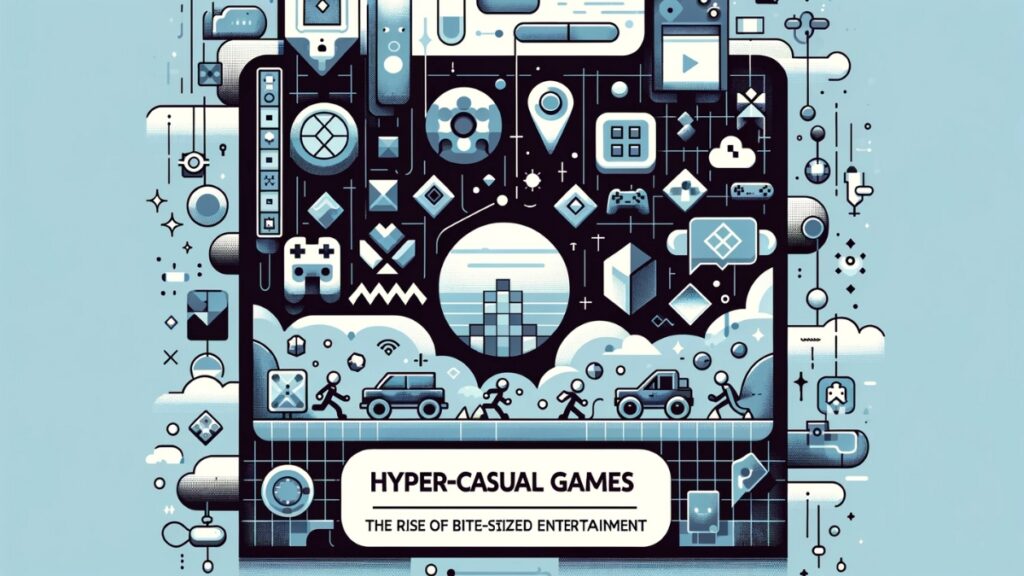The landscape of game development is perpetually evolving, shaped by technological advancements, shifting consumer preferences, and the relentless drive for innovation. As we embark on 2024, the gaming industry stands at the cusp of a new era, marked by groundbreaking tools and methodologies that are redefining what games are and what they can be. This article delves into the current state of game development, exploring the trends, tools, and technologies that are at the forefront of this transformative period.
The Transformation of Game Development
The game development sector has transitioned dramatically over the past few years. From the early days of simple 2D games to the complex, immersive experiences of today, the journey has been nothing short of extraordinary. The acceleration of technological innovation, particularly in fields such as cloud computing, artificial intelligence (AI), and virtual/augmented reality (VR/AR), has opened new frontiers for game developers, offering tools to create more engaging, interactive, and realistic gaming experiences.
Key Trends Shaping the Industry
Several key trends are currently shaping the game development industry:
- Cloud Gaming: Spearheaded by tech giants like Google, Amazon, and Microsoft, cloud gaming is projected to reach a market size of $4.34 billion in 2023. It enables players to stream games from remote servers, breaking free from hardware limitations and providing a more accessible gaming experience.
- Cross-Platform Development: The demand for cross-platform games is rising as players seek to access their favorite games on multiple devices. This has led to a focus on “build once, deploy everywhere” methodologies, simplifying game development across various platforms.
- Artificial Intelligence and Machine Learning: AI and ML are not just transforming in-game elements but also aiding in the development process, from creating more intelligent NPCs to automating certain aspects of game design.
- Virtual and Augmented Reality: VR and AR are providing more immersive gaming experiences, with developers increasingly exploring these technologies to create games that offer a higher level of player engagement.
- The Metaverse: A concept that is rapidly gaining momentum, the Metaverse represents interconnected virtual worlds, offering new platforms for social interaction, commerce, and entertainment within gaming environments.
- Sustainable Development Practices: The gaming industry is becoming increasingly conscious of its environmental footprint, adopting eco-friendly measures across development and distribution processes.
- Hyper-Casual Games: These games, characterized by their simplicity and short play sessions, are growing in popularity, catering to the casual gamer demographic.
The Role of Game Development Tools
Central to these trends are the game development tools and engines like Unity and Unreal Engine. They continue to be the backbone of the industry, offering robust features and capabilities that empower developers to bring their creative visions to life. These engines are constantly updated to incorporate the latest technological advancements, ensuring that developers have access to state-of-the-art tools.
The Rise of Cloud Gaming
Shifting Paradigms in Game Accessibility
Cloud gaming, a transformative trend in the gaming industry, is rapidly altering how games are distributed and played. With its projected market size reaching $4.34 billion in 2023, cloud gaming marks a significant shift from traditional gaming paradigms. This technology enables games to be streamed from remote servers directly to players’ devices, bypassing the need for powerful hardware.
Key Players and Their Impact
Major technology companies like Google, Amazon, and Microsoft are at the forefront of this movement. Each has developed its cloud gaming platforms, such as Google’s Stadia, Amazon’s Luna, and Microsoft’s xCloud, significantly impacting the market. Amazon’s integration of Luna with Twitch is a prime example, seamlessly linking game streaming with viewer engagement.
Benefits of Cloud Gaming
The advantages of cloud gaming are manifold:
- Hardware Independence: Players no longer need high-end hardware to enjoy the latest games. The processing is done on remote servers, allowing games to be played on less powerful devices.
- Instant Access and Portability: Games can be played instantly without the need for downloads or installations. This also means that players can switch devices seamlessly.
- Cost-Effectiveness: Reduces the need for consumers to constantly upgrade hardware, potentially making gaming more accessible to a broader audience.
Challenges and Future Prospects
Despite its benefits, cloud gaming faces challenges, primarily related to internet infrastructure and latency issues. As internet speeds and stability continue to improve globally, these challenges are gradually being overcome, paving the way for more widespread adoption of cloud gaming.
The future of cloud gaming looks promising, with continuous advancements in technology and increased investments by major players. It represents a shift towards more accessible and flexible gaming experiences, catering to a diverse and growing audience.
Cross-Platform Development: A New Standard

Embracing Universality in Game Design
Cross-platform development has become a critical focus in the game development world, driven by a simple yet powerful idea: create once, deploy everywhere. This approach not only streamlines the development process but also ensures that games reach a wider audience by being accessible on multiple platforms.
The Driving Forces Behind Cross-Platform Compatibility
- Consumer Expectations: Players now expect to access their favorite games across various devices, including PCs, consoles, and mobiles. This demand has pushed developers to create games that offer a consistent experience regardless of the platform.
- Efficiency in Development: Cross-platform tools allow developers to write code once and deploy it across multiple platforms, significantly reducing development time and resources.
- Market Expansion: By making games available on multiple platforms, developers can tap into broader market segments, increasing their potential user base.
Tools and Technologies
Several game engines and tools have risen to prominence, facilitating cross-platform development. Unity and Unreal Engine are notable examples, offering robust support for multiple platforms. These engines have continually evolved, integrating new technologies and capabilities to help developers create more immersive and engaging cross-platform games.
Challenges and Considerations
While the benefits are clear, cross-platform development does come with its challenges. These include ensuring consistent performance across different platforms, managing varying hardware capabilities, and dealing with platform-specific guidelines and limitations.
Artificial Intelligence in Game Creation
Revolutionizing Design and Gameplay
Artificial Intelligence (AI) is not just a buzzword in the realm of game development; it’s a game-changer. AI’s influence in game creation is multi-faceted, impacting everything from non-player character (NPC) behavior to procedural content generation and player experience personalization.
AI-Driven Innovations in Game Development
- Enhanced NPC Behavior: AI algorithms enable NPCs to exhibit more complex and realistic behaviors, making in-game interactions more engaging and lifelike.
- Procedural Content Generation: AI is used to automatically generate game content such as levels, environments, and even entire worlds, offering unique experiences to players every time they play.
- Personalized Gaming Experiences: AI can analyze player behavior and preferences to tailor the gaming experience to individual players, enhancing engagement and enjoyment.
Overcoming Development Challenges with AI
AI also addresses several challenges in game development:
- Efficiency in Game Testing: AI-driven automation tools can rapidly test games, identifying bugs and performance issues more efficiently than manual testing.
- Balancing Game Difficulty: AI algorithms can dynamically adjust the difficulty of a game based on the player’s skill level, ensuring a balanced and enjoyable experience for players of all skill levels.
Ethical Considerations and Future Prospects
While AI offers immense possibilities, it also raises ethical considerations, particularly regarding data privacy and the use of AI in manipulating player experiences. As AI technology continues to advance, these concerns need to be addressed responsibly.
Virtual and Augmented Realities: Immersive Gaming Experiences

Elevating Immersion through Technology
Virtual Reality (VR) and Augmented Reality (AR) are redefining immersion in gaming, offering players experiences that blur the lines between the virtual and real worlds. These technologies have seen significant advancements in recent years, leading to their increased adoption in game development.
The VR and AR Gaming Landscape
- VR Gaming: VR games transport players to entirely virtual environments, offering a level of immersion that traditional gaming cannot match. With VR headsets becoming more affordable and advanced, VR gaming is increasingly accessible to a broader audience.
- AR Gaming: AR games overlay digital elements onto the real world, creating unique gaming experiences that can be enjoyed anywhere. The success of games like Pokémon GO has showcased the massive potential of AR in gaming.
Innovations and Challenges
- Innovative Gameplay: VR and AR enable new forms of gameplay, leveraging the physical space and movements of players.
- Hardware Development: Ongoing advancements in VR and AR hardware are crucial for enhancing user comfort and immersion.
- Challenges: The main challenges include addressing motion sickness in VR and ensuring AR experiences are seamless and intuitive.
Future Prospects
As VR and AR technologies continue to evolve, they are expected to become even more integral to the gaming industry. These technologies not only offer new gaming experiences but also open up possibilities for training, education, and various other applications.
The Metaverse: Gaming’s New Frontier
A Convergence of Digital and Physical Worlds
The Metaverse represents a bold new direction in gaming, a convergence of digital and physical realities, where players can engage in a variety of activities within a shared virtual space. This concept is rapidly gaining traction, influenced by advancements in VR, AR, and cloud technologies.
Defining the Metaverse
- A Shared Online Space: The Metaverse is a collective virtual shared space, created by the convergence of virtually enhanced physical reality, augmented reality (AR), and the internet.
- Beyond Just Gaming: While the Metaverse finds its roots in gaming, it extends to various aspects of social interaction, commerce, and digital expression.
The Role of Game Development in the Metaverse
- Creating Immersive Worlds: Game developers are at the forefront of building the expansive, interactive worlds that form the Metaverse. Using tools like Unity and Unreal Engine, they are crafting environments where players can explore, interact, and create.
- Community and Social Interaction: Games in the Metaverse are not just about gameplay; they are also platforms for social interaction, allowing players to meet, collaborate, and form communities.
Opportunities and Challenges
- Opportunities for Creativity: The Metaverse opens up vast opportunities for creativity and innovation in game design and player interaction.
- Technical and Ethical Challenges: Building the Metaverse presents significant technical challenges, including scalability and interoperability. Ethical considerations around privacy and user safety are also paramount.
Future Prospects
The Metaverse is more than a trend; it’s a glimpse into the future of digital interaction. As technology evolves, the Metaverse is likely to become a significant part of not only gaming but also our daily digital lives.
Eco-Friendly Game Development
Embracing Sustainability in the Gaming World
The growing awareness of environmental issues has led to a significant shift in the gaming industry towards eco-friendly game development. This trend reflects a broader commitment to reducing the ecological impact of digital entertainment.
Sustainable Practices in Game Development
- Energy-Efficient Game Design: Developers are optimizing game engines for better energy efficiency, reducing the carbon footprint of both development and gameplay.
- Digital Distribution: The move towards digital and cloud-based game distribution minimizes packaging waste and the environmental impact associated with physical distribution.
- Using Renewable Energy Sources: Some game studios are adopting renewable energy sources to power their servers and data centers, contributing to a more sustainable industry.
The Impact of Eco-Friendly Development
- Consumer Expectations: With a growing number of players becoming environmentally conscious, adopting eco-friendly practices can resonate positively with the audience.
- Industry Responsibility: The gaming industry, recognizing its role in global environmental issues, is taking steps to adopt more sustainable practices.
Challenges and Future Directions
While the move towards eco-friendly game development is promising, it presents challenges, including balancing sustainability with the demands of high-performance gaming. However, as technology advances, these challenges are becoming more manageable, paving the way for a greener future in gaming.
Hyper-Casual Games: The Rise of Bite-Sized Entertainment

Simplifying Gaming for Wider Appeal
Hyper-casual games, characterized by their simplicity and ease of play, have surged in popularity, offering quick and engaging entertainment accessible to a wide range of players.
Characteristics of Hyper-Casual Games
- Simple Mechanics: These games typically feature straightforward, intuitive gameplay that is easy to learn but can be challenging to master.
- Short Play Sessions: Designed for brief play sessions, hyper-casual games are ideal for playing on the go or during short breaks.
The Appeal of Hyper-Casual Games
- Broad Accessibility: Their simplicity makes them accessible to a wide demographic, including non-traditional gamers.
- Monetization Strategies: Many hyper-casual games are free to play, monetized through in-game advertising and microtransactions, making them financially accessible.
The Evolution of the Genre
Hyper-casual games are continuously evolving, incorporating new elements and innovative gameplay to remain engaging and competitive in the fast-paced gaming market.
Final Thoughts
The Ever-Evolving Landscape of Game Development
The gaming industry, in 2024, stands at a pivotal juncture, marked by rapid technological advancements and changing player expectations. From the rise of cloud gaming to the integration of AI and the expansion of the Metaverse, the industry is evolving at an unprecedented pace. Eco-friendly practices and the surge in hyper-casual games reflect a broader trend towards more sustainable and inclusive gaming.
Embracing Change and Innovation
Game development is no longer just about creating entertaining experiences; it’s about pushing the boundaries of what’s possible, exploring new platforms and technologies, and adapting to the changing landscape of digital entertainment. This involves embracing new tools, exploring uncharted territories in game design, and staying ahead of emerging trends.
The Role of Developers and Players
Game developers play a crucial role in shaping the future of the industry. Their creativity, innovation, and willingness to adopt new technologies and practices are essential in driving the industry forward. Simultaneously, players’ evolving preferences and feedback are vital in guiding the development of new games and experiences.
Looking to the Future
As technology continues to advance, new opportunities and challenges will emerge. Virtual and augmented realities, AI, cloud gaming, and the Metaverse are just the beginning. The future of gaming holds limitless possibilities, and it’s an exciting time to be part of this dynamic industry.
Conclusion
The world of game development in 2024 is a testament to human creativity and technological prowess. As we continue to explore new horizons in gaming, the industry is set to offer more immersive, inclusive, and innovative experiences than ever before. The trends we see today are just the stepping stones to a future where gaming is not just a form of entertainment but a significant part of our digital lives. Game development is not just creating games; it’s about creating experiences that resonate, engage, and inspire.




